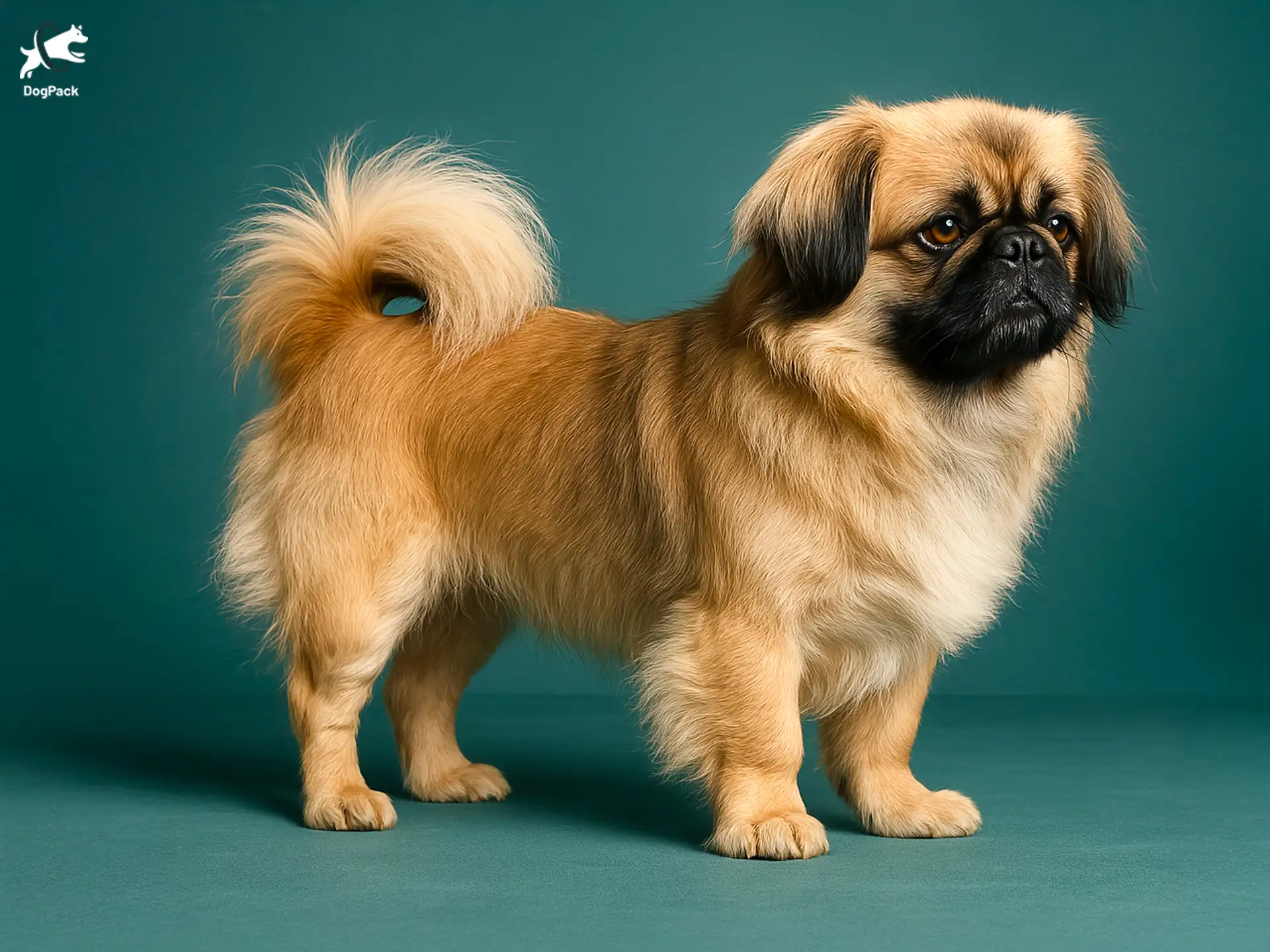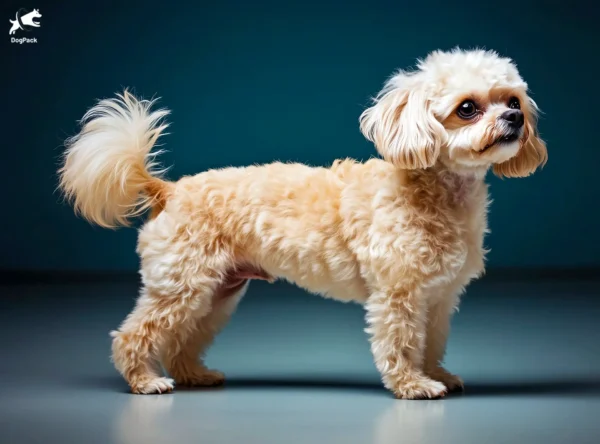Puginese Dog Breed Info & Overview
If you’ve ever dreamed of a dog that’s just the right mix of charm and spunk, the Puginese might be your perfect match. This adorable hybrid fuses the playful vibe of the Pug with the regal flair of the Pekingese, resulting in a small yet captivating companion. For fans of small dog breeds, they’re truly one-of-a-kind and ready to share lots of love.
Characteristics
Pictures
Breed History
While the Pug and Pekingese have ancient roots tracing back to Chinese nobility, their cross is a more modern endeavor. Early records suggest that fanciers in the U.S. began experimenting with blending the two companion dogs to create a smaller, more affectionate version. Over time, these purposeful matings gave rise to an endearing hybrid that quickly captured hearts.
Although each parent breed boasts a storied past—Pugs once entertained royal courts, while Pekingese were esteemed by emperors—their offspring offers a fresh twist on tradition. Combining the Pug’s easygoing nature with the Pekingese’s regal flair proved to be a winning formula. Early litters highlighted the delightful facial wrinkles and soft coats that soon became a signature.
Today, enthusiasts admire how the Puginese seamlessly merges two distinct pedigrees while carving out its own identity. Though not officially recognized by major kennel clubs, smaller breed clubs and online communities have embraced this loveable companion. Eager owners continue refining the look and temperament, ensuring that this blend remains as cherished as it is novel.
Temperament, Personality
A blend of sweet-natured charm and quiet confidence, these dogs tend to be affectionate lap-lovers who enjoy a good cuddle. They’re typically sociable around family, but they may display a little stubborn streak inherited from their ancient aristocratic lineage. Nonetheless, gentle guidance and consistent positive reinforcement usually help them thrive in day-to-day interactions.
Children usually find them endearing companions, especially if taught how to gently interact with small dogs. Although they rarely show aggression, they can be cautious around strangers or larger pets. Early socialization helps them remain relaxed and open-minded, making them delightful little shadows that follow you around the home without being excessively clingy.
Some owners describe them as part-time comedians, thanks to their expressive faces and occasional bouts of clownish antics. They often gravitate toward calm environments where they can soak up attention. Ultimately, whether lounging on the sofa or trotting around the living room, the Puginese exudes a kindhearted spirit that endears them to most who meet them.
Physical Characteristics
With a compact frame inherited from both parent breeds, these pups typically sport sturdy bodies that belie their petite size. Their heads often display a flatter profile, reminiscent of the Pug’s iconic muzzle, while their eyes can be large and expressive. Many boast a slightly elongated coat, though some inherit more of the short-haired gene from the Pug side.
Wrinkles, especially around the forehead and muzzle, often highlight their unique appearance. Ears may vary—some fold closely against the head like a Pug’s, while others fan out more like a Pekingese’s feathered ears. Coat colors range widely: fawn, black, sable, and even brindle are all possible, creating a kaleidoscope of possibilities within the same litter.
Despite their diminutive stature, they carry themselves with a distinct dignity. Their gait can be slightly rolling due to their compact legs, and they often wag a curled tail that rests snugly over the back. The Puginese tends to weigh between 10 and 16 pounds, offering a portable companion that’s still robust enough for everyday adventures.
Health Issues
As a brachycephalic mix, these pups can be prone to respiratory challenges. Owners may notice snoring, loud breathing, or occasional wheezing, especially after exercise. Keeping them cool in warm weather and avoiding excessive physical strain helps mitigate potential breathing problems. Regular checkups with a vet can catch signs of respiratory distress early and keep issues in check.
Eye problems, such as corneal ulcers and progressive retinal atrophy, can occur due to the breed’s prominent eyes. Dental care also deserves attention, given the short muzzle which can crowd teeth and increase the risk of tartar buildup. Meanwhile, joint issues like patellar luxation may arise, especially if the dog is overweight or overly rambunctious.
Beyond these concerns, they can also inherit back problems if their spine is elongated. Keeping a healthy weight is crucial to reduce unnecessary strain on their joints and back. The Puginese may live a happy, comfortable life when provided with diligent preventive care, including regular vaccinations, heartworm treatments, and routine vet screenings for any emerging issues.
Grooming Needs
With a tendency toward moderate to heavy shedding, these dogs benefit from regular brushing to remove loose fur and prevent mats. A slicker brush or pin brush is often sufficient, though some owners opt for professional grooming to keep coats trim and tidy. Frequent brushing also helps distribute natural oils, maintaining a healthy, shiny coat year-round.
Facial folds need special attention, as moisture and debris can gather in the wrinkles, leading to skin irritation or infection. Gently wiping these areas with a damp cloth or pet-safe wipe a few times a week is a solid preventive measure. Also, regular ear checks and nail trims are essential for overall hygiene and comfort.
Bathing shouldn’t be overdone; once every month or so generally suffices unless your pup gets particularly dirty. Too many baths can dry out the skin and coat. Additionally, a routine oral hygiene regimen helps keep dental issues at bay. Overall, the Puginese will thrive with consistent, gentle grooming that leaves them feeling fresh and comfortable.
Exercise Requirements
A moderate daily walk or a playful romp in the yard is usually enough to satisfy their activity needs. These pups love short bursts of energy, but lengthy, vigorous exercise sessions could overwhelm their delicate respiratory system. The key is striking a balance: frequent, gentle exercise that keeps them active without pushing them beyond their limits.
Indoor play sessions with soft toys or puzzle feeders help stimulate their minds and expend pent-up energy. They generally enjoy following their favorite humans around the house, so letting them trot behind you can count as exercise too. However, it’s wise to avoid intense midday heat or long jogs, as these dogs are sensitive to extreme temperatures.
Enrichment activities, like obedience practice or short agility games, can also keep them mentally sharp. Just remember to watch for signs of fatigue—if they start panting heavily or lagging behind, it’s time for a break. The Puginese tends to thrive when physical activity is varied, fun, and conducted at a gentle pace that respects their limits.
Training Tips
Although these dogs can be eager to please, their stubborn side might occasionally show up during training sessions. Using positive reinforcement techniques—treats, gentle praise, and patience—goes a long way in capturing their attention. Harsh corrections often backfire, as they may simply shut down or resort to stubborn behaviors if they sense frustration.
Start basic obedience early, focusing on commands like “sit,” “stay,” and “come.” Short, upbeat sessions are better than marathon lessons, ensuring they remain engaged. Socializing them with various people, pets, and environments from a young age helps curb any anxiety or aloofness down the line. Consistency is key: avoid sending mixed signals about household rules.
Some owners find clicker training particularly effective, as these pups respond well to clear audio cues. Offering small, tasty treats can capture their interest, but be mindful of portion sizes to maintain a healthy weight. The Puginese often blossoms when training is turned into a game, making them eager learners who enjoy showing off new tricks.
Nutrition, Diet
With a compact frame and potential respiratory issues, calorie control is essential. Adult Puginese often thrive on roughly 300–400 calories per day, split into two meals. High-quality small-breed formulas that include fish oil for skin and joint health can be beneficial. Avoid free-feeding to prevent overeating, as excess weight exacerbates breathing and joint problems.
Due to their flat faces, selecting kibble shaped for brachycephalic breeds can help them chew more comfortably. Look for recipes boasting real meat as the first ingredient, moderate protein, and limited fillers. Some owners incorporate wet food for added hydration, but it’s important to monitor portion sizes closely to avoid tipping the scale.
Treats should be given sparingly and preferably contain wholesome ingredients like lean meats or pumpkin. Skip overly fatty table scraps that may upset their stomach or contribute to weight gain. The Puginese generally does well with easily digestible diets, and scheduling periodic weigh-ins ensures they stay on track for a healthy, active life.
Adoption, Breeders
Rescuing this charming hybrid is often the most rewarding route. Local shelters sometimes have small dogs like the Puginese available, so don’t overlook those. Breed-specific rescue groups can also help match you with a compatible companion. When adopting, ask about any known medical issues or behavior traits to ensure a smoother transition into your home.
If you prefer going through a breeder, research thoroughly to find someone who prioritizes health testing. Insist on meeting the puppy’s parents and check for brachycephalic screenings, ensuring the lines are as healthy as possible. Reputable breeders typically offer detailed records on vaccinations and genetic tests. The Pug Dog Club of America or Pekingese Club of America can provide guidance and additional resources.
Online forums and social media groups often share referrals for well-reviewed breeders or highlight adoption events. Always be wary of “too good to be true” deals, as these may indicate puppy mills or unethical practices. Carefully vet any source and confirm they stand by their dogs’ health. That way, bringing a Puginese into your life becomes a positive, worry-free experience.
Family Pet?
Smaller in stature yet big on love, this mix typically adores being around people of all ages. Families who teach respectful handling will find them patient companions, though their slightly fragile bodies mean toddlers should be supervised. Older children often have an easier time understanding boundaries, turning these pups into sweet playmates who readily join in on mild activities.
Other pets in the household may be accepted if introduced slowly, especially if the new arrivals don’t tower over them or play too rough. Their sociable, laid-back attitude means they can coexist with fellow animals, given enough patience and controlled introductions. Occasional caution might surface, but consistent reassurance helps them adapt nicely.
In many ways, they fill the role of both a loving companion and a pint-sized entertainer. They thrive on family interaction, curling up beside you during movie nights and greeting you joyfully at the door. The Puginese rarely demands high-octane outings, so for a family seeking a relaxed yet engaged pet, they can be just right.
Right For You?
Anyone searching for a smaller, affectionate companion will likely find these pups rewarding. They’re well-suited to apartment living, as they don’t require large yards or extensive outdoor space. However, their brachycephalic features mean they must be safeguarded from extreme temperatures. If you’re unwilling to adjust indoor cooling during hot summers, this might not be the breed for you.
Additionally, potential owners should factor in grooming and possible medical costs, especially regarding respiratory checks. Their moderate energy level fits nicely with quieter lifestyles, though daily walks remain essential for health and mental stimulation. Patience is key, as they can display a bit of stubbornness, but their devotion and comedic charm make the effort worthwhile.
If you’re the type who cherishes cozy cuddle sessions and easygoing companionship, the Puginese could be a fantastic match. They respond well to love and gentle guidance, returning affection tenfold. Ultimately, deciding if this laid-back hybrid aligns with your household depends on whether you can handle a little snoring alongside endless loyalty.
Conclusion
Combining the Pug’s playful charm with the Pekingese’s quiet dignity, this hybrid stands out as a compact companion that offers plenty of heart. Their moderate exercise needs and affectionate demeanor make them well-suited for individuals or families prepared to address occasional grooming and health considerations. Though sometimes stubborn, they respond positively to patient training and consistent routines. If you’re drawn to a small dog with a big personality, the Puginese may very well be your next devoted friend. With proper care, you’ll find their lively spirit and cuddly disposition endlessly rewarding, welcoming you home with a wagging tail and a warm snuggle.
FAQs
-
How does a Puginese’s temperament compare to a Pug or a Pekingese?
The Puginese inherits a mix of the Pekingese’s independence and the Pug’s affectionate nature. While loving and devoted, they may be more stubborn than a Pug and less aloof than a Pekingese. Early training helps balance their playful yet headstrong personality.
-
Do Puginese dogs overheat easily like Pugs and Pekingese?
Yes! The Puginese has a brachycephalic (flat-faced) structure, making them prone to heat sensitivity. They should be kept in cool environments, avoid intense exercise in hot weather, and always have access to water and shade to prevent breathing difficulties.
-
Is a Puginese a better lap dog than a purebred Pekingese?
Both breeds love to lounge, but the Puginese tends to be more adaptable. While Pekingese can be independent and reserved, a Puginese may be more affectionate and eager for attention, making them a better lap companion for those wanting a cuddly dog.
-
Does a Puginese have a high prey drive?
Not particularly. The Puginese is more people-oriented and usually doesn’t have strong hunting instincts. However, they may still chase smaller pets out of curiosity, so early socialization can help them live peacefully with cats and other small animals.
-
How does the Puginese compare in barking behavior?
The Puginese can be a moderate barker, inheriting the watchful alertness of the Pekingese and the expressive natureof the Pug. While not excessive barkers, they may alert owners to visitors or demand attention. Early training can help manage unwanted vocalizations.
Breed Ratings
The Puginese is moderately clever but can be stubborn, responding best to patient, reward-based methods over harsh corrections.
The Puginese enjoys fun activities and occasional zoomies, making them a lively companion without becoming overly rambunctious.
Though active in short bursts, the Puginese doesn’t require hours of exercise, preferring casual walks or brief indoor play sessions.
Their coat can shed moderately year-round, so regular brushing helps manage loose hairs and keep the Puginese looking tidy.
While occasionally curious about smaller critters, the Puginese is not known for a high prey drive, making them fairly laid-back.
Frequent brushing, wrinkle cleaning, and possible professional trims mean the Puginese can be somewhat challenging to maintain.
The Puginese learns at a steady pace with gentle, consistent training, though occasional stubbornness calls for extra patience.
Preferring companionship, the Puginese may become anxious if left alone for long periods, thriving best with frequent interaction.
While they may alert bark at new sounds, the Puginese is generally moderate in vocalization, especially with proper socialization.
Some drool can occur, particularly in hot weather, but overall the Puginese tends to be relatively manageable in this regard.
Early socialization helps the Puginese adapt to other dogs, though a calm introduction prevents any territorial or wary behavior.
Brachycephalic traits and possible joint issues place the Puginese at moderate risk, but attentive care ensures a healthier life.













